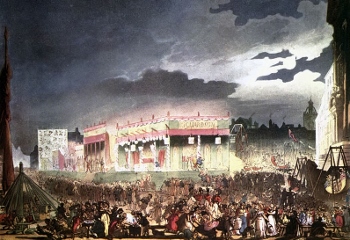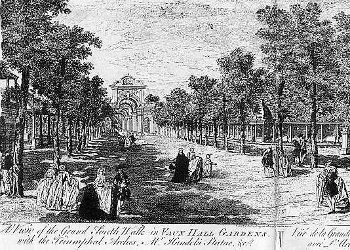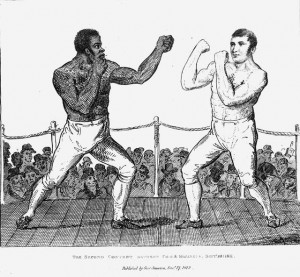 I’m so happy to be back again, blogging with the Riskies!! Thank you, gracious friends! I’ve been thinking about the subject of manly pastimes a lot recently as I work on my new book. (Yes, I am finally back working on it!) As I write this, my husband is downstairs watching the Bruins play hockey on the TV, providing a very fitting background of excited man-crowd sounds, punctuated by his own loud exclamations. Our Regency gentlemen had a wide range of diversions to amuse themselves and test their mettle, and just like men today, especially enjoyed the chance to compete with one another. In our beloved fictional Regency world, our romance heroes indulge in all sorts of activities, from gaming and watching horse races to the more athletic pastimes –riding, hunting, shooting, driving, fencing, wrestling, archery, rowing, skating, and, of course, fighting. I did one hero whose passion was sailing. I’m sure you can think of more.
I’m so happy to be back again, blogging with the Riskies!! Thank you, gracious friends! I’ve been thinking about the subject of manly pastimes a lot recently as I work on my new book. (Yes, I am finally back working on it!) As I write this, my husband is downstairs watching the Bruins play hockey on the TV, providing a very fitting background of excited man-crowd sounds, punctuated by his own loud exclamations. Our Regency gentlemen had a wide range of diversions to amuse themselves and test their mettle, and just like men today, especially enjoyed the chance to compete with one another. In our beloved fictional Regency world, our romance heroes indulge in all sorts of activities, from gaming and watching horse races to the more athletic pastimes –riding, hunting, shooting, driving, fencing, wrestling, archery, rowing, skating, and, of course, fighting. I did one hero whose passion was sailing. I’m sure you can think of more.
What I wonder is, and I hope you’ll jump into the conversation, are any of these pastimes problematic for you as a reader formulating an image of the coolly elegant, romantic Regency man? The hero in my current work-in-progress is known to be one of the better card players in London, a big man who dresses well and does not make waves. He has another side to him, however –he excels at bare-knuckle fighting and is a member of a private fighting club made up of five aristocratic fellows who essentially have surpassed what Gentleman Jackson’s establishment can offer them. He is a character who first showed his face in one of my books ten years ago, but at that time I hadn’t realized he would someday claim his own story.
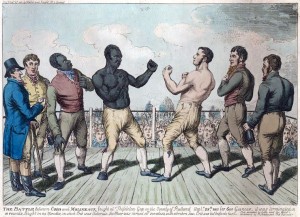 The vivid brutality of the fighting contrasts so sharply with the elegance that was also so admired in this era, I find sometimes I can’t wrap my brain around it. Is it too violent to be in a Regency romance? We know that historically, fighting, or “pugilism”, was extremely popular in the Regency period. But in our fantasized version of the Regency, is there room for both “bucks” and “bruisers” among our heroes? Would a hero who is both work for you?
The vivid brutality of the fighting contrasts so sharply with the elegance that was also so admired in this era, I find sometimes I can’t wrap my brain around it. Is it too violent to be in a Regency romance? We know that historically, fighting, or “pugilism”, was extremely popular in the Regency period. But in our fantasized version of the Regency, is there room for both “bucks” and “bruisers” among our heroes? Would a hero who is both work for you?
As so often happens, there suddenly seem to be a number of authors who are all going in this direction.
Delilah Marvelle created quite a stir with her trailer for Forever a Lord (January 2013). If you didn’t see it, here it is:
I haven’t read it yet –looking forward to it, so discussion is fine but no spoilers please!
Sara MacLean –just mentioned at a workshop I attended last week that her upcoming book –I think it’s No Good Duke Goes Unpunished (coming November? 2013) –is about a hero who does bare-knuckle fighting.
(Sigh.) But we know they will all be quite different from each other. Have you read others? Or written them? Let’s get a conversation going in the comments. I’d really love to know what you think!
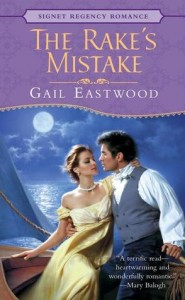 I will give away (by mail) a mint paperback copy of my 2002 release, The Rake’s Mistake, to one lucky poster. To be entered in the giveaway, you must give your email address and let me know you want to be entered! I’ll contact the winner to get a mailing address.
I will give away (by mail) a mint paperback copy of my 2002 release, The Rake’s Mistake, to one lucky poster. To be entered in the giveaway, you must give your email address and let me know you want to be entered! I’ll contact the winner to get a mailing address.









.jpg)

